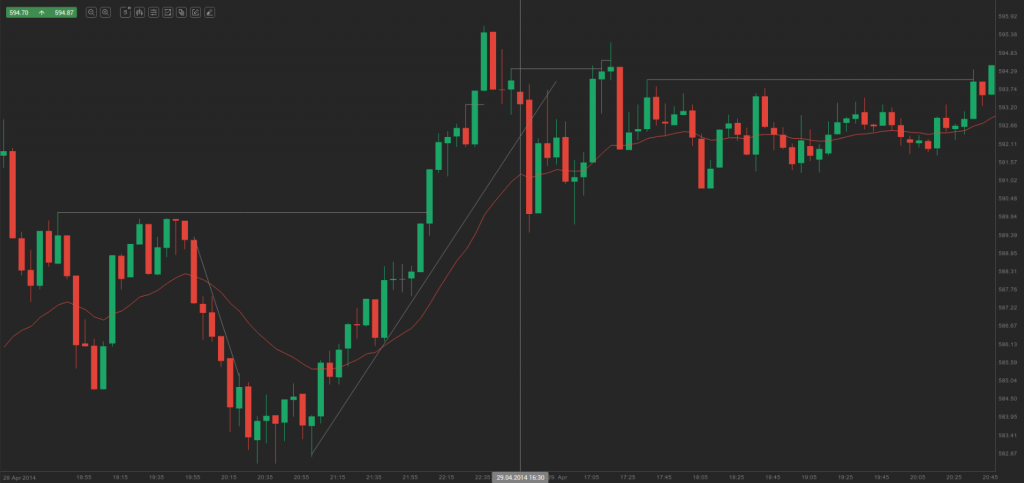Overview of breakouts
This lesson will cover the following
- Any key price level or formation may have a breakout
- Positioning during a strong trend
Breakouts represent price moves beyond a given previous level of relevance (a trend line, a previous high or low, the high or low of the prior bar and so on). From a traders perspective a breakout signifies strength, which may result in a new trend. In case a bull breakout bar shows a strong close and the following few bars also have strong closes and trending high and low prices, then, at some point in the future, the price may probably move to higher levels than those at present. After that the market usually returns beyond the starting point of the breakout.
Any key price level or formation may have a breakout
Breakouts may occur from trading ranges, from key trend lines, from daily high or daily low or from yesterdays close. In all these cases a trader should use one and the same trading approach. He/she would fade the move, if the breakout failed, and enter in the direction of the breakout, if there was a pullback after the breakout. In rare cases a trader should make his/her entry on the breakout itself.
During the majority of trading days traders view swing highs and swing lows as setups appropriate for fading. During a strong trend day, on the other hand, breakouts are accompanied by increased volume, while the market demonstrates insignificant pulling back. This implies that with-trend traders dominate market sentiment. In case of such a strong trend, a trader, relying on price action, should make his/her entries in the direction of the trend on pullbacks after the breakout and not on the breakout itself, as he/she strives at risk minimization all the time. At times, however, as soon as a trader determines that a huge move is incoming, he/she will probably enter in the direction of the move for any reason and still be successful. During a very strong trend every single pip or tick is a potential entry in trends direction, thus, a trader is able to enter on market order at any point, using an appropriate protective stop.
Making entries during a strong trend
In a strong trend every single breakout beyond the previous extreme level can be considered as an entry in the direction of the trend. This is usually supported by increased volume, large-sized trend bars and more price action in that direction (usually within the next several bars). This means that entries are being made on the breakout itself. But, as we said above, a trader should make such decisions in rare cases. A price action trader may often spot an earlier entry during a considerable trend.
Even if a trader misses the earliest entry point during a breakout and decides to wait for a pullback, he/she can enter on a market order, or on one-minute pullback. It would be better, however, if he/she waited for at least two large-sized trend bars (or four-five moderate-sized bars) to appear and make his/her entry on one-minute pullback with about 50 percent of his/her normal position size. The trader may wait for a pullback test of the breakout and use a protective stop, which he/she may have used, if he/she have entered earlier. He/she may scalp out half of the position and move the protective stop to breakeven. As the strong trend develops, the trader may add to his/her position or make new entries on each occurring pullback.
Breakout traders would have gone long above every previous swing high (as marked on the 5-minute chart of AAPL above). Price action traders would have entered earlier, on every breakout pullback, which can be viewed as a bull flag. Breakout traders, in fact, would have entered the market exactly where price action traders would have sold their long positions at gains.
Generally, if the market is in a strong uptrend, one can buy at any level and still be profitable. What is worth noting, however, is that his/her risk to reward ratio will likely be far better, if he/she enters on pullbacks, than it would be, if he/she entered on breakouts.
